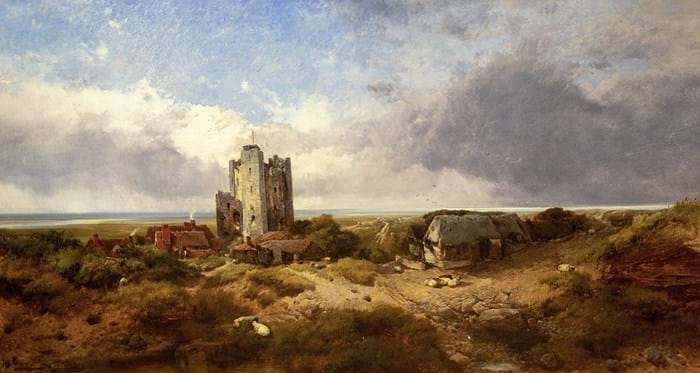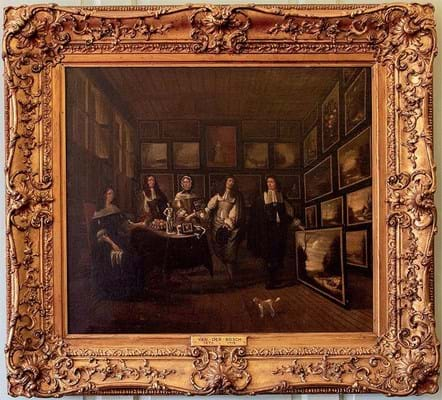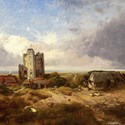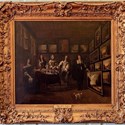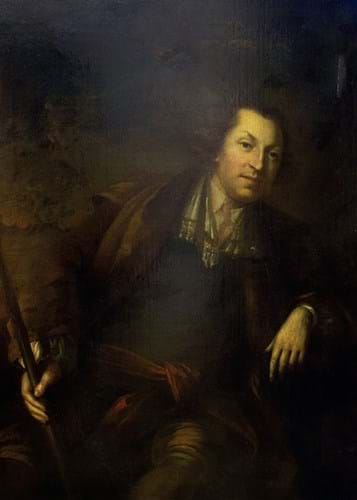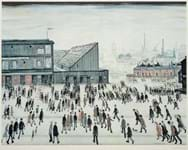Derbyshire auction house Hansons (20% buyer’s premium) declared the “return of the country house auction” after its mammoth sale in a grand Staffordshire home netted over £1m – the firm’s best total since it launched in 2005.
The six-day auction on October 10- 19 was held at Bishton Hall, a vineclad Georgian country house in the Staffordshire countryside. (Also see Hammer Highlights and Books on Works on Paper results in ATG No 2366.)
Its contents, which had been part of the house since at least the 1940s when it was turned into a prep school, was offered without reserve alongside a raft of other art and antiques sourced from elsewhere.
Hansons’ associate director and head of fine arts Adrian Rathbone said: “With a country house auction, you have that cachet of buying from a grand residence, the provenance, the history and the setting of course.
“Private buyers were paying more for things, simply because it was in a country house setting. They want a part of that life.”
Certainly, the pictures in the sale from both Bishton Hall and elsewhere included several punchy results for works deemed less commercial on the secondary market but which look right at home in a period country house.
Bright outlook
The most dramatic performer was an inherited 19th century oil on canvas by Norwich School painter Henry Bright (1814-73).
Depicting Orford Castle in Suffolk, the signed 2ft x 3ft 7in (62cm x 1.1m) work, dated 1857, sold to a UK private buyer bidding via one of six phones for £12,100, well above its £2000- 3000 guide. The sum appears to be the highest paid for the artist’s work at auction in over a decade, according to the Art Sales Index.
“This was an exceptional price for him in the current market,” said Rathbone. “It was a named view in Suffolk, which people like, and a lot of people collect Norwich School art, so maybe that was the main appeal here.”
The 800-year old castle, built between 1165-73 by Henry II, was a popular painting spot for Bright.
A larger view dated a year earlier resides in the Norfolk Museums Collections, while two others sold for £9000 and £7200 in UK auctions during rosier times for the market in 1980s and ‘90s.
Dingy but a decent price
Decent bidding also emerged for two Continental pictures from the Bishton Hall consignment. A rather dark and dirty Old Master by Flemish genre painter Balthasar van den Bosch (1675-1715) titled The Connoisseurs was knocked down at £6400, against a tentative £1000- 1500 estimate.
The 2ft 4in x 2ft 7in (72 x 80cm) oil had hung pride of place in the hall and depicts a group of men and women admiring a painting with a tiny dog in the foreground.
“Under that dirt is a good painting but we were surprised it made the price it did in the current market – it’s not the most fashionable of paintings,” said Rathbone.
The other work, also conservatively estimated at £1000- 1500, was a decorative Canaletto-inspired Italian view of the Grand Canal in Venice. Possibly dating to the early 19th century, it appealed to several private bidders and was eventually knocked down to a buyer in the room at £5600.
Portrait appeal
Another area gaining traction at the sale was 18th century portraits, especially those well-suited to country house-style interiors. Rathbone said he has noticed a growing interest in early portraiture, “provided you can attribute it to a painter and provide a bit of history”.
A case in point was a portrait of a sportsman attributed to Richard Hurleston (fl.1763-80), a student of Joseph Wright of Derby.
Hurleston exhibited at the Royal Academy from 1771-80 but his career was cut short when he died from a lightning strike on Salisbury Plain in c.1780.
The picture came with good provenance. It had once hung in judges’ lodgings in Derby and descended through the Inglefield family, local patrons of Wright of Derby during the 18th century.
It was this link that probably accounted for a previous attribution to Wright of Derby, which also erroneously identified the sitter as the actor David Garrick.
In need of a clean, the 4 x 3ft (1.23m x 92cm) oil on canvas came in a gilded frame and sold for more than twice its modest guide at £5000.


